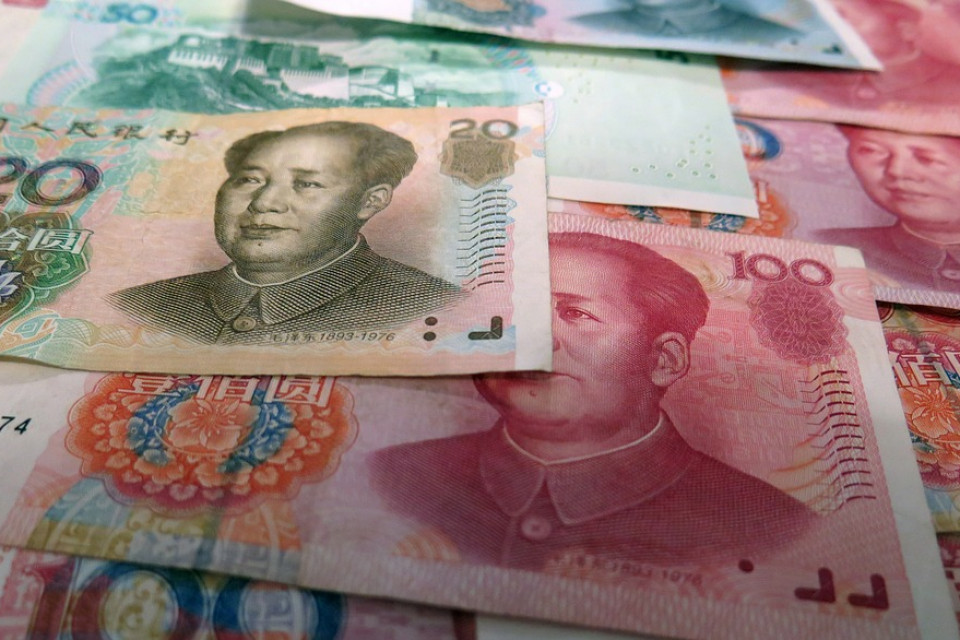For many years, relations between China and the United States were fluid. In the beginning everything seemed to be advantages. For the US, an immense market opened up that offered enormous possibilities for profit. For China, access to American technology short-cut a quite long and expensive road towards the progress and creation of a quite backward economy. The problem is that the expectations were actually met. The growth of the Chinese economy was exponential, and now China is seen as a real threat that calls into question the United States' technological leadership, and therefore its global economic leadership.
In its April 2015 issue, The World Economic Outlook report of the International Monetary Fund indicated that China's GDP had already exceeded that of the United States in 2014, shifting the centre of gravity of the world economy towards Asian countries. since then, China's growth rate has continuously surpassed that of the United States. The annual reports of the European Commission (EC) Analysis of the ICT (Information and Communications Technology) sector and its R&D in the EU and other countries confirmed -based on the information contained in the Predict database- the continuous progress of the Asian giant in a quite sensitive terrain, that of the industries that produce ICT, and the R&D invested in them.
Recently published, the latest report shows the spectacular progress of the emerging Asian economies in general, and China in particular, in a process that seems unstoppable.
In the last year for which information is available, 2016, China was the world's largest producer of ICTs and had already surpassed the value of US production.
To get an idea of the progress, it is enough to remember that in 1995, the added value generated by the ICT sector in China was 16.7% of that of the United States. In 2016, China had already surpassed it, reaching 102.8%, 86 percentage points increase in 21 years! However, we have to take into account that Chinese ICT production includes the manufacture of hardware designed in the USA that was relocated to China. This circumstance would reduce the size of the progress, but even so, the growth between 1995 and 2016 is still impressive.
In the same period of time, the production of the ICT sector in the EU also increased, but at a much lower rate: it went from 69.1% of the US in 1995 to 79.6% in 2016, only 10.5 percentage points. This is the other part of the problem. In this war between the US and China, the great loser is the EU. As an example of its position of backwardness, it is enough to note that among the ten major technology companies there is no European one, but there are four Asian companies.
China, and also India, have made the journey from economic backwardness to approaching the standards of developed countries in a relatively short period of time.
It is a growth based on the competitive advantage in costs, labour intensive and with low wages and therefore also low productivity. This is why it is often argued that its strength lies in having become the great factory of the world. However, this growth model appears to be changing at an accelerating pace. The most obvious evidence is the importance that, above all China, is giving to investment in R&D. It is no longer a question of copying, but of appropriating the biggest slice of the cake rather than just the crumbs left by the purely manufacturing activities of assembling parts, or the manufacture of components with less technological content.
In the US, the ratio between R&D expenditure (EBRD) and Value Added of the ICT sector -what is called R&D intensity- was 11.9% in 2016, in the EU it was less than half, 5.2%. The problem is that while in the EU this percentage was practically stagnant since the beginning of the century, in China it has skyrocketed. In 2006, the first year for which information is available, it amounted to 3.9% and in 2016 to 5.7%. This is to say, in just ten years it has increased 1.8 percentage points, six tenths more than the Spanish ratio in 2017 (1.2%) and practically 2%, which is the (unattainable) goal for Spain.
However, science in China presents a weakness that only democracy heals: its hierarchical character. This dirigisme might lead to successes such as putting a man on the moon, or developing 5G technology before anyone else, but at the cost of leaving two-thirds of the country in 16th century conditions until their turn comes. In the long run, it was shown that it is scientist's freedom that leads to far-reaching ground-breaking discoveries.
The undisputed leader in terms of productivity in the ICT sector (and in virtually all sectors) is the United States.
In the year 2000, the productivity per hour worked in China was 16% of that of the United States. Only 16 years later, it had increased to 21%. It is true that the differences with respect to the leader are still significant, but the importance of their dynamism is clear when we see that in this same period of time, the EU lost positions, going from 85% down to 69% of USA productivity.
It was this exponential trajectory that was the trigger of the war that emerged in all its harshness with the Trump Emergency Statement on May 15th this year, which prohibits American companies from doing business with foreign companies that put the security of the country at risk. What the United States really wants to stop is what is known as "first-mover advantage", the advantage of the one who takes the initiative. In the field of new technologies, it is not uncommon for the first to make a move, be they countries or companies, not only to receive enormous returns, but above all they have the capacity to set the standards that followers will be forced to accept. This happened with the 4G technology, led by the US, and now it is feared that the same will happen with the 5G that China leads. The initial dominance of 4G technology was the one that led to the worldwide leadership of Apple, Google and other North American giants.
China has learned their lesson and has invested huge amounts of money to deploy 5G networks in as many countries as possible.
Spain was one of the first. Vodafone announced that their 5G technology will be available from June 15th. The Huawei network will be responsible for the output in 15 cities. This fact poses problems of diverse nature. First of all, we note that Huawei is already enjoying the advantages of "first to make a mover" with all that it implies, particularly with regard to Trump's foreseeable reprisals. Secondly, it will make it possible to verify the risks to national security that communications are in the hands of Chinese companies, one of the main arguments used to approve the Declaration of Emergency. In both cases, the absence of a common response agreed in the European Union leaves us in a quite vulnerable position. Thirdly, and despite that changes will take time, we already know the wonders that are derived from the use of this technology, from surgical procedures carried out by remote-controlled robots, urban remote-controlled transport, and in general the remote control of devices, without being aware of any lag between when a device sends information, and that information being received by another device.
From the economic perspective, surely the consequence of the longest journey is the one proposed by Richard Baldwin in their well-known book The Globotics Upheaval, in which the term "Globotics" is the result of the symbiosis between Globalisation and Robotics. Baldwin conceives a world in which precisely 5G technology and the drastic reduction of the response time to send and receive data, the so-called latency, will seriously jeopardize individual jobs and whole professions in the service sectors that until now were supposed to be protected from competition. It anticipates a world in which jobs that require personal presence, such as lawyers, will be subject to competition from professionals residing in other less developed countries. These quasi-migrants will operate on an equal footing with the locals thanks to two types of advances: those achieved by artificial intelligence in simultaneous translation programmes; and the low latency provided by 5G technology. For example, the world he describes of lawyers from anywhere in the world participating in work meetings in any office anywhere else the world through virtual reality is only a sample of the threats that loom large over the qualified workers of the grown countries. It is not surprising then that both China and the US compete fiercely to be the "first to make a move".










